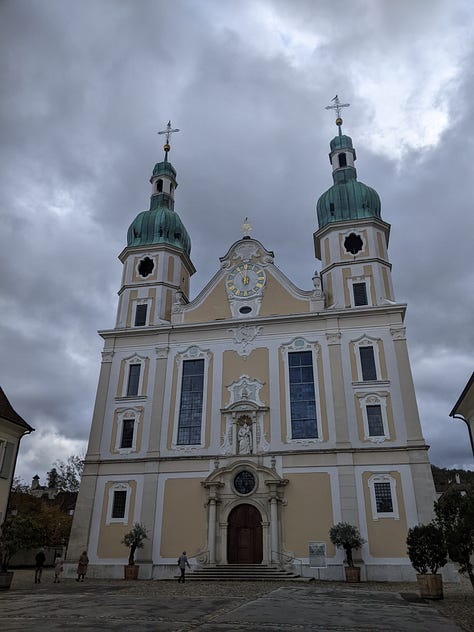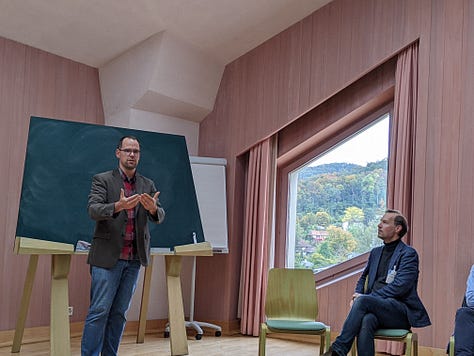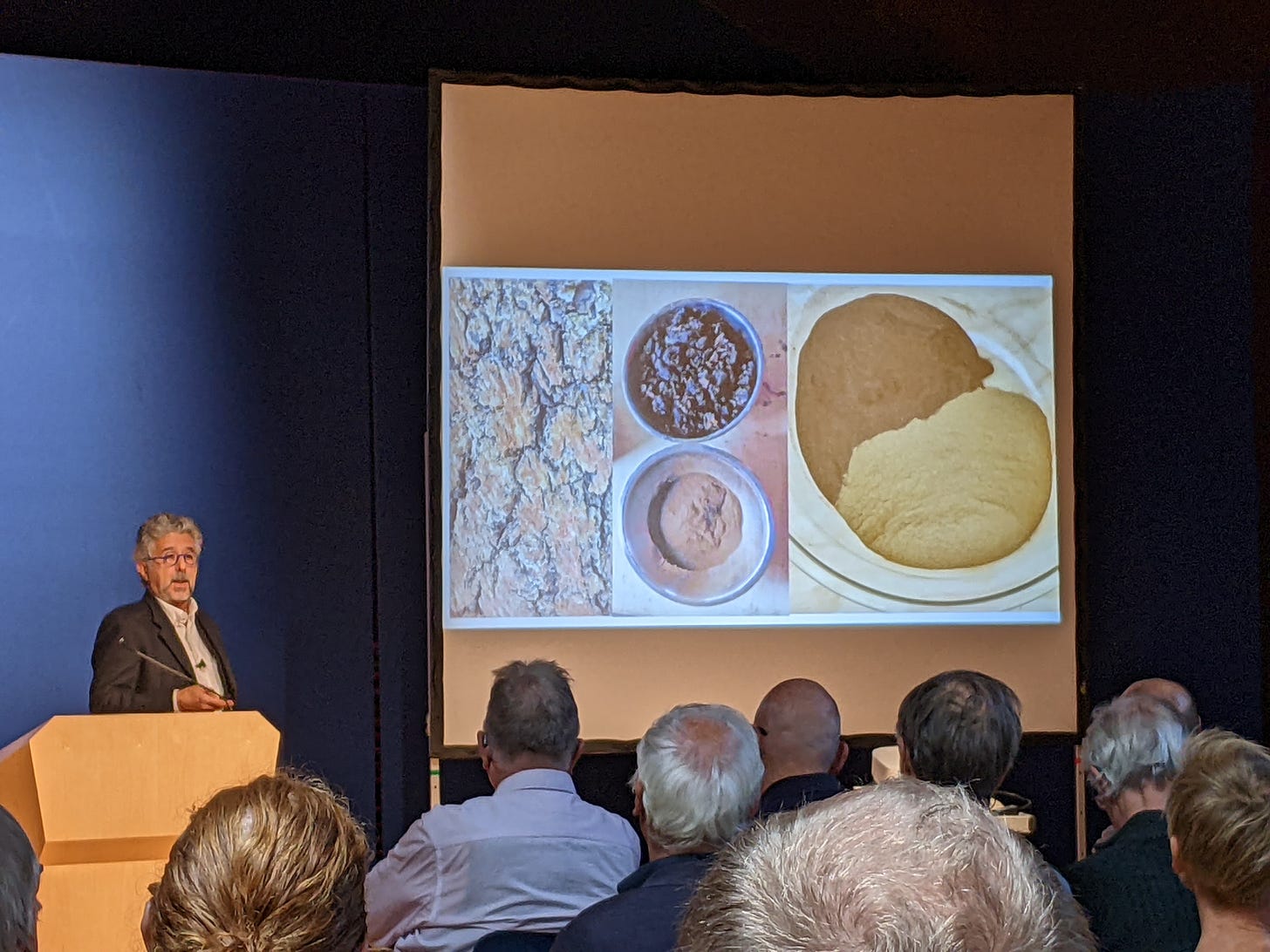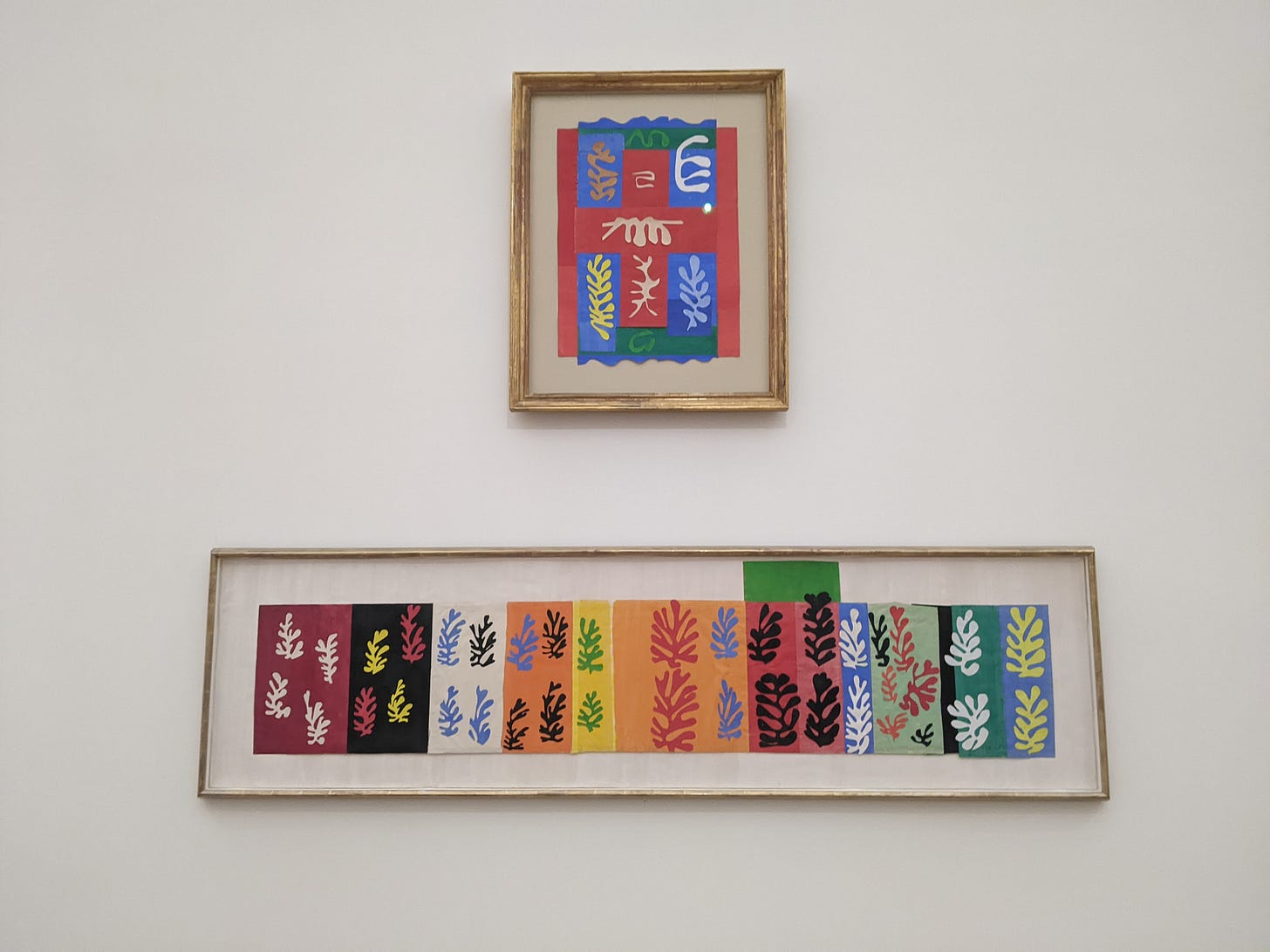“If you want nature to treat you well, you must treat nature well. If you start destroying nature, nature will destroy you, and this basic moral precept is fundamental in our present knowledge of ecology and conservation. What we know now about ecology points to the fact that nature exists in the most delicate balance, and that anything which tends to upset the balance will produce consequences of the most unexpected character and often of the most disastrous character.” - Aldous Huxley
Visiting the Goetheanum recently for the Evolving Science 2024 conference, I was given a generous welcome and was met with interesting people and stimulating conversations. I must express gratitude for being considered in the first place and for the generous hospitality I was shown while I was there. I hope that attendees appreciated what I brought because I certainly appreciated what they shared. I’d like to share some images that most resonated with me during my brief trip.









One of my biggest practical takeaways from the conference was that biodynamic preparations, specifically the horn manure (“500”) produce measurable results not within years but within a matter of days. The horn manure applied to fields supports the proliferation of Plant Growth Producing Bacteria (PGPB), the effect of which peaks at 8 weeks after spraying and then tapers off. The findings demonstrate that repeated applications through the season provide the best results — at least once every two months. But looking at the charts, I see that you don’t want to apply preparations when the initial effect is waning, but before the first influence has climaxed.
This is to say, to keep high levels of these particular beneficial microbes, one might wish to spray horn manure as often as once a month before the initial impulse drops off. That multiple applications are beneficial is not itself news to me. Still, the data confirms some of what I myself have done in the garden: repeated applications as often as once a week in the garden. Seeing clear presentations of the growth-supporting benefits of the preparations has galvanized me to return to a more frequent application.
The remarkable work of Eduardo Rincón, the new Agriculture Section leader from Mexico, explores the synthesis of science and art. Is there anything more Goethean? His work repopulating the diverse oak forests of Mexico — after their wanton destruction by the Spanish — compels me to look for even more expansive ways to revitalize our living ecosystems around us. Not just what can I do that is strictly “biodynamic” by the book, but what can I do that reclaims and nurtures humane ecosystems? Industrialized landscapes strike me with how few wild spaces are left. Even what woodland is there is fairly restricted, with few wild buffer strips between divided properties. The indigenous disposition in the Americas is in stark contrast to this. What Owen Barfield might poetically call “original participation” flourished on this continent, where human beings interfaced with natural ecosystems in a way that increased the capacity for diversity. Where possible, trusting an inherent lawfulness in Nature and only gently humanizing spaces through respectful tending resulted in the apparently Edenic conditions Europeans encountered as untapped resources. Willa Cather opines in Death Comes for the Archbishop:
“In the working of silver or drilling of turquoise the Indians had exhaustless patience; upon their blankets and belts and ceremonial robes they lavished their skill and pains. But their conception of decoration did not extend to the landscape. They seemed to have none of the European's desire to ‘master’ nature, to arrange and re-create. They spent their ingenuity in the other direction; in accommodating themselves to the scene in which they found themselves. This was not so much from indolence, the Bishop thought, as from an inherited caution and respect. It was as if the great country were asleep, and they wished to carry on their lives without awakening it; or as if the spirits of earth and air and water were things not to antagonize and arouse. When they hunted, it was with the same discretion; an Indian hunt was never a slaughter. They ravaged neither the rivers nor the forest, and if they irrigated, they took as little water as would serve their needs. The land and all that it bore they treated with consideration; not attempting to improve it, they never desecrated it.”1
There is something beautiful about handling Nature tenderly, trusting that there is a living inner wisdom there even if we cannot fathom it. Where is the wisdom we’ve discarded for our successful programs of industrial extraction?


One of the most inspiring presentations, of course, was from Ahmed Elshazly on behalf of SEKEM in Egypt an organization which has not only greened the desert but works with over 25,000 farms in the country. Where they are centered was originally classified as “eastern desert” but they have so transformed it that it is no longer desert. The work of SEKEM puts to shame my own paltry work. If only there were more organizations like SEKEM, we would live in a radically different — and radically more humane — world. It is the wisdom born out of greening the desert that will save the world.
My talk, Individualizing Biodynamics: Soil and Soul, explored briefly how different preparations can be when made in different soils. You can give the same recipe to two different chefs, and it will taste quite different — both will still fill your stomach, but the character of the chef shines through. Moreover, if you create the same recipe from two different gardens, it will taste even more significantly different. The recipe will be recognizable, but it will express more of the terroir when made from one particular place. That is our work with biodynamics: progressively decentralizing production so that each bioregion makes its own quality preparations. In the meantime, the Josephine Porter Institute exists to fill the gap between the ideal world and the real: ideally, everyone would make their own preparations, but practical reality does not allow this.
There was much more that I can’t write about now, but suffice it to say that the Goetheanum campus is an imposing presence, one from which new life will emerge. Thank you for following us and for all your ongoing support.

Willa Cather, Death Comes for the Archbishop










Beautiful work and photos! Thank you for sharing these insights 🙏🏼🙏🏼
Very nice! Good work.